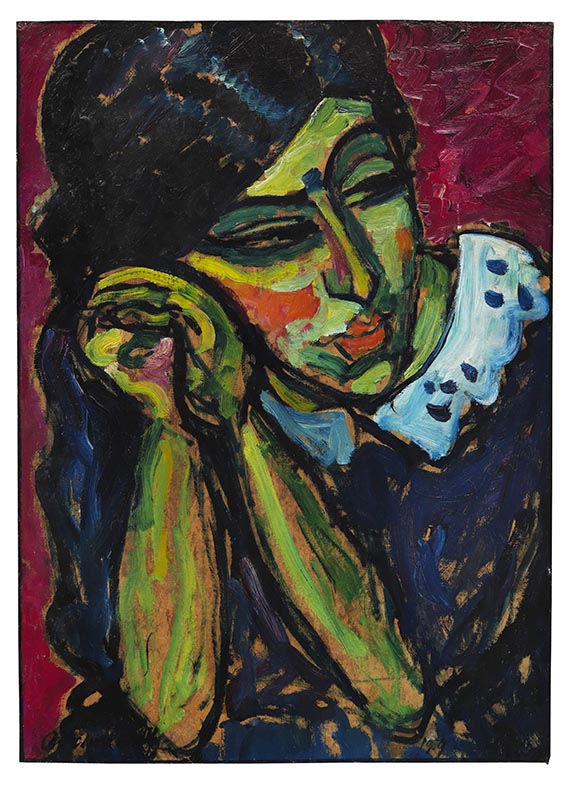Dictionary


Vereinigte Werkstätten (United Workshops)
The "Vereinigten Werkstätten für Kunst und Handwerk" (Associated Workshops for Arts and Crafts) were founded in Munich in 1897 as a platform for sales and exhibitions. Following the model of the Arts and Crafts Movement, several crafts enterprises joined forces in the association, which, unlike its British counterpart, did not turn so much against industrial mass production. The association became a stock corporation in 1907. The "Vereinigten Werkstätten" were in existence until 1991, when financial problems led to its annulment.
Among the founding members of the "Vereinigten Werkstätten" were leading Art Nouveau artists such as Richard Riemerschmid (1868-1957), Bruno Paul (1874-1968), Bernhard Pankok (1872-1943), Hermann Obrist (1863-1927) and Peter Behrens (1868-1940), which almost entirely did not come from the Bavarian capital, but were active there. Many of them were also members of the "Deutsche Werkbund" (German Work Federation), founded in 1907.
The artists of the "Vereinigten Werkstätten" had specialized in interior fittings such as furniture, lamps and textiles, which were made for a rather well-off clientele. Still, some industrially produced objects, such as some works of Bruno Pauls and Richard Riemerschmids, were high quality works for a broader public. Art Nouveau furniture of the "Vereinigten Werkstätten" was characterized by simple and functional forms with organic values. Unlike their francophone colleagues, the members of the "Vereinigten Werkstätten" largely did without floral elements, thus emphasizing the expressive powers of the line. The art was geared at Japanese art, just as Art Nouveau; thus the artists anticipated, by means of the autonomous line, Expressionism and Abstraction.
The "Vereinigten Werkstätten für Kunst und Handwerk" (Associated Workshops for Arts and Crafts) were founded in Munich in 1897 as a platform for sales and exhibitions. Following the model of the Arts and Crafts Movement, several crafts enterprises joined forces in the association, which, unlike its British counterpart, did not turn so much against industrial mass production. The association became a stock corporation in 1907. The "Vereinigten Werkstätten" were in existence until 1991, when financial problems led to its annulment.
Among the founding members of the "Vereinigten Werkstätten" were leading Art Nouveau artists such as Richard Riemerschmid (1868-1957), Bruno Paul (1874-1968), Bernhard Pankok (1872-1943), Hermann Obrist (1863-1927) and Peter Behrens (1868-1940), which almost entirely did not come from the Bavarian capital, but were active there. Many of them were also members of the "Deutsche Werkbund" (German Work Federation), founded in 1907.
The artists of the "Vereinigten Werkstätten" had specialized in interior fittings such as furniture, lamps and textiles, which were made for a rather well-off clientele. Still, some industrially produced objects, such as some works of Bruno Pauls and Richard Riemerschmids, were high quality works for a broader public. Art Nouveau furniture of the "Vereinigten Werkstätten" was characterized by simple and functional forms with organic values. Unlike their francophone colleagues, the members of the "Vereinigten Werkstätten" largely did without floral elements, thus emphasizing the expressive powers of the line. The art was geared at Japanese art, just as Art Nouveau; thus the artists anticipated, by means of the autonomous line, Expressionism and Abstraction.
Offers




